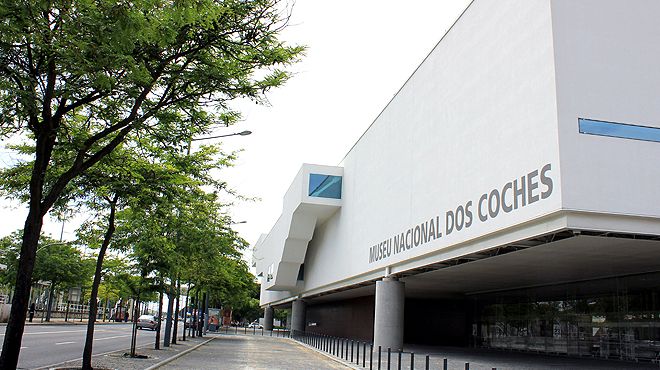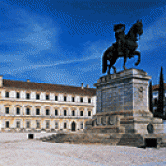Museu Nacional dos Coches

Museums and Palaces
The Coach Museum was an initiative of Queen D. Amélia de Orléans e Bragança, wife of King D. Carlos I (1889-1908), who inaugurated it in 1905. It contains an exceptional and unique collection of richly adorned royal vehicles, from the 17th to 19th centuries (coaches, berlins, carriages, chaises, litters, sedan-chairs), used by the Portuguese other European courts, the Patriarchs of Lisbon and Portuguese noble houses up until the advent of the motor car.
The rare example of Philip II's travelling coach (late 16th century) and the three monumental coaches that were part of the magnificent embassy sent by Portugal to Pope Clement XI in Rome (1716), with iconography in gilded woodwork glorifying the Discoveries, are some of the most notable pieces in this incomparable exhibition. The collection also includes an important store of harnesses, ceremonial and coach service liveries, a stock of 18th century armoury and accessories and the oil portraits of the monarchs of the Braganza Dynasty.
The Coach Museum (Museu dos Coches) is divided between the new building in Belém, the old Horse Riding Arena of the Royal Palace, both in Praça Afonso de Albuquerque, in Lisbon, and the Ducal Palace of Vila Viçosa.
The new National Coach Museum building, inaugurated in May 2015, houses the most representative part of the collection. Occupying a site in Belém where a former military workshop (Oficinas Gerais do Exército) once stood, it serves a two-fold purpose as a cultural facility and a public space. In the words of Pritzker prize-winning architect Paulo Mendes da Rocha, who designed it, “the museum has no doors and creates opportunities for interaction on every side.” However, the project is intended to be more than just a museum; it additionally functions as an urban infrastructure providing the city with a “public space”, responds to the museum’s need to expand its exhibition area and technical support infrastructure, and creates new aspects to be appreciated by visitors to this, Portugal’s most-visited museum. The structure comprises a main building with a suspended hall and an annex, which are connected by an overpass that allows people to move from one to the other. The layout of the buildings creates a kind of portico directed towards a freely-accessible inner square.
The new museum features spaces for permanent and temporary exhibitions, areas for reserve collections and a workshop for conservation and restoration, which will contribute to the development of conservation and restoration of this type of heritage. Additionally, it has new spaces for a library and archives, an auditorium seating 330 people, a restaurant/bar and cafeteria, and a gift shop.
The area of the Horse Riding Arena of the Royal Palace, initially adapted to become a museum by the architect Rosendo Carvalheiro and later by Raul Lino, is interesting to see, being representative of the XVIII Century. The paintings deserve special reference as the artists are José Malhoa and Conceição e Silva, two important Portuguese artists.
In the old stables of the Ducal Palace, in Vila Viçosa, there is also a branch of the National Coach Museum, an excellent reason to visit this city in the Alentejo.
1300-044 Lisboa
10am - 6pm (last visit at 5.30pm) - Tuesday to Sunday
Closed: Monday and Public Holidays (1 January, Easter Sunday, 1 May, 13 June, 25 December)
















 Explore
Explore 
 Remember and Share
Remember and Share 


